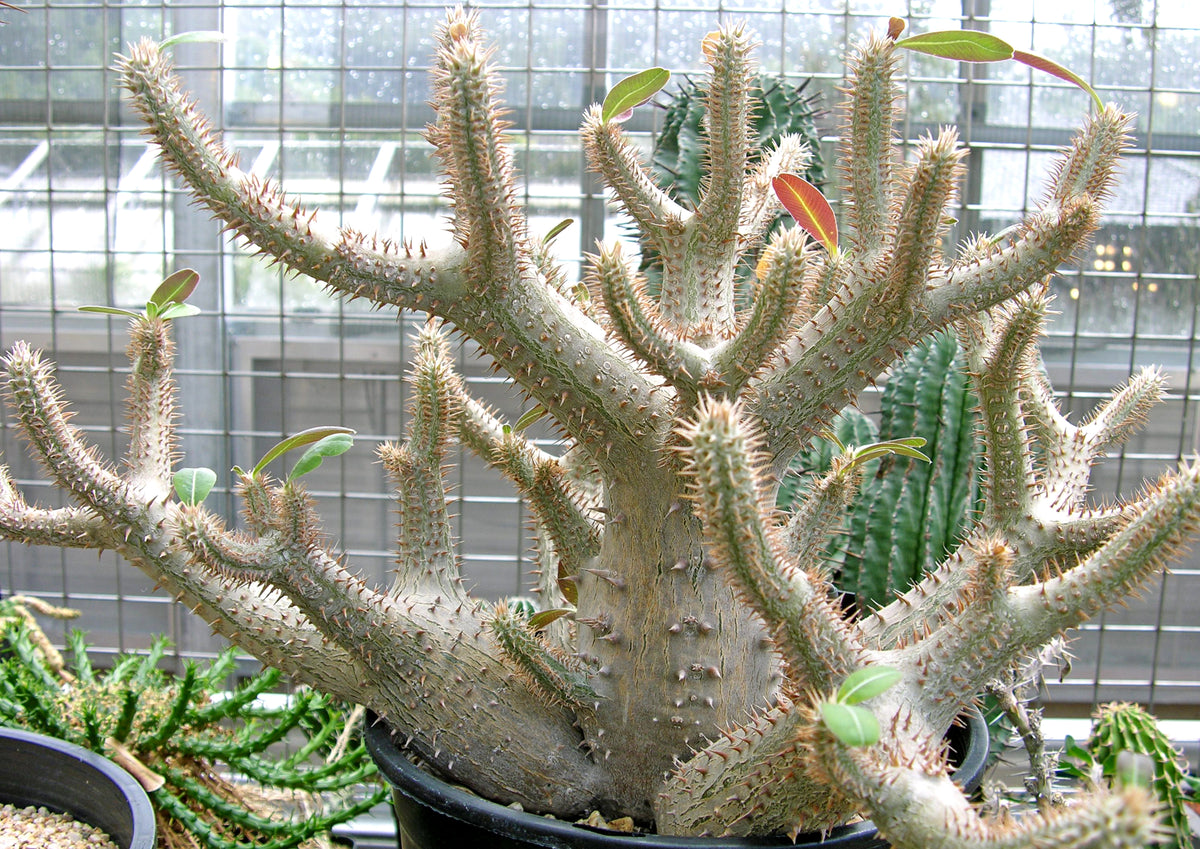
Succulents, or 'piante grasse' as they're called in Italian (literally 'fat plants'), have a unique plumpness that sets them apart in the plant kingdom. But what accounts for their 'plump' appearance? It's not fat, as one might find in animals, but rather a specialized water storage tissue known as parenchyma. In the challenging conditions of arid environments, these plants have evolved remarkable adaptations to store precious water, enabling them to thrive where other plants falter. This water-retentive superpower comes from a modification of the standard plant structure, where certain tissues become engorged with water, often altering the plant's shape to optimize storage and minimize other less essential parts. It's a fascinating trade-off that has allowed succulents to become masters of survival in some of the world's driest locales.

Behold the stylized illustration of a typical plant before us: leaves for photosynthesis, a stem for support and transport, roots for water and nutrient uptake, and a flower for reproduction. This image encapsulates the fundamental components of plant architecture. However, in the adaptive dance with nature, some plants have deviated from this standard blueprint. In the world of succulents, certain organs take on an exaggerated role—becoming the lifeline for survival in arid environments.
Now, let's zoom in and examine the extraordinary ways in which succulents have reimagined this blueprint. By expanding one organ for water storage—be it leaves, stems, or roots—succulents can ensure their survival, often at the expense of other plant parts. What emerges from this evolutionary creativity are species where a single organ can so dominate the form that it becomes synonymous with the plant itself, as seen in the swollen stems of cacti or the fleshy leaves of Lithops. Each modification is a testament to the ingenuity of life in the face of scarcity.
Leaf succulents:
examples: Aloe and relatives, Lithops, Agave, Echeveria, Sedum

Within the diverse strategies of succulents for water conservation, one particularly striking adaptation is the evolution of leaf succulents.

These plants have reconfigured their body plans dramatically, channeling their resources into developing thick, fleshy leaves engorged with water-storing parenchyma tissue. Did you know you sometimes rub succulent parenchyma juice on your skin? The soothing gel of the Aloe vera, rich in polysaccharides, is the juice from the plant’s leaf parenchyma cells.
This evolutionary pathway has led to a diminution of the stem, which takes a backseat to the now-dominant leaves. Such leaf-centric succulents showcase an elegant solution to water scarcity, effectively turning their leaves into living reservoirs, while the stem becomes a subtle supporter rather than the central character of the plant's architecture.
Stem succulents:
examples: Cacti, Ocotillo, Stapilia and relatives, some Euphorbia for example E. obesa and E. platyclada
While leaf succulents have perfected the art of water storage within their foliage, other plants have charted a divergent evolutionary course.

Stem succulents represent a group that has shifted the role of water preservation away from the leaves and into the stems. This strategic adaptation allows these plants to survive in even more arid environments. In some stem succulents, leaves are present but often appear in a diminished capacity or are sometimes absent altogether, reducing the surface area susceptible to water loss. This is notably evident in the leaf-less cactus family, where spiny areoles replace leaves, and in the Stapelia genus, where the stems have become the primary site of photosynthesis as well as water storage.
Caudiciform plants:
from the Latin words for "stem" (caudex) and "shape" (forma)
examples: Dioscorea, Adenium, Pachypodium, Fockea, Cyphostemma, some Euphorbia for example E. francoisii and Euphorbia cap-saintemariensis

Caudiciform plant are similar to stem succulents. They are characterized by a caudex, a swollen trunk or root system that serves to store water and nutrients, enabling the plant to endure periods of drought. 
These plants often have a distinct appearance, with the caudex being a prominent feature above or below ground, and may have smaller leaves or stems that grow from the caudex.
Concluding thoughts:



